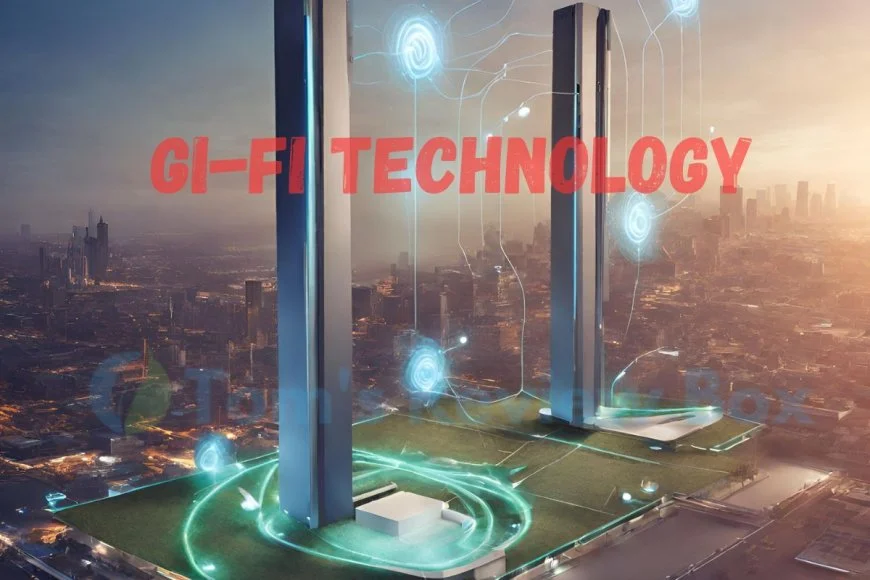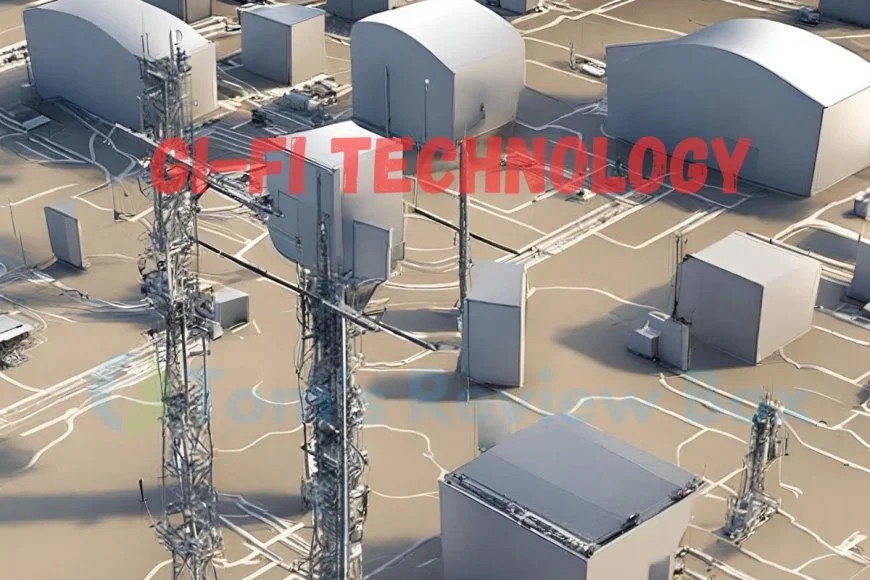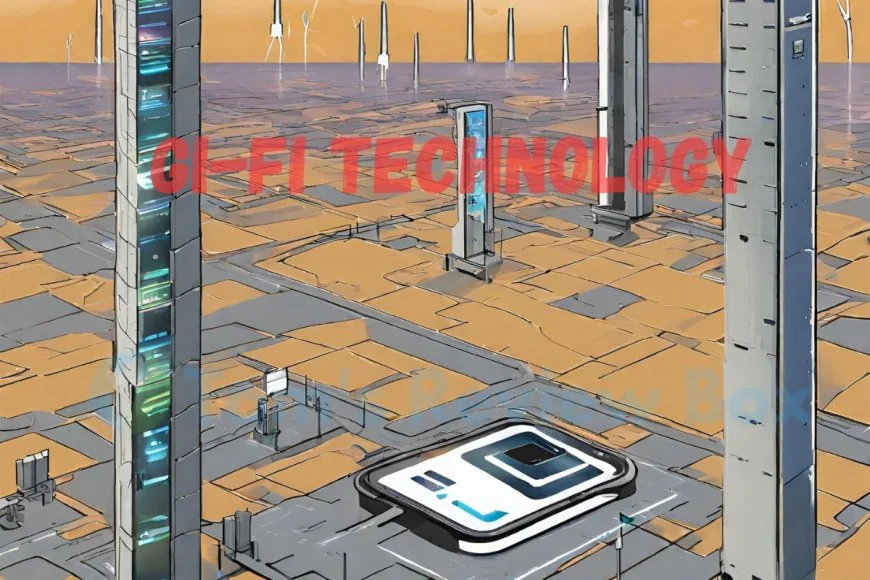Curious about the next big thing in wireless technology? Enter Gi-Fi. Imagine lightning-fast data transfer speeds that make your current wifi seem sluggish. With Gi-Fi, say goodbye to buffering and hello to seamless connectivity. This revolutionary ultra-wideband technology offers a dramatic contrast to traditional wireless networks, promising blazing wifi speeds and minimal interference for all your digital needs.
Get ready to dive into the world of Gi-Fi technology where speed meets efficiency like never before. Say farewell to endless loading screens and embrace a high-speed wifi future where connectivity is swift and reliable. Are you prepared for the era of Gi-Fi?
Key Takeaways
-
Gi-Fi technology offers high-speed wireless communication with low power consumption, making it a promising option for various applications.
-
To leverage Gi-Fi technology effectively, understand its basics, technological foundation, advantages, applications, and use.
-
Compared to other technologies like Wi-Fi and Bluetooth, Gi-Fi stands out due to its faster data transfer rates and reduced interference issues.
-
Despite its potential, Gi-Fi faces challenges such as limited range at 60 GHz and compatibility concerns that need to be addressed for widespread adoption.
-
Stay informed about the future prospects of Gi-Fi, as advancements in this technology could lead to more efficient and reliable wireless connectivity solutions.
-
Explore real-world implementation examples to see how organizations are utilizing Gi-Fi technology in different settings.
Overview
Importance
Gi-Fi technology, short for Gigabit Wireless Fidelity, revolutionizes wireless communication with its high-speed data transfer capabilities. Unlike traditional Wi-Fi, Gi-Fi offers rapid data transmission rates. This technology plays a crucial role in meeting the escalating need for swift and efficient data exchange in various settings.
The significance of Gi-Fi lies in its ability to support applications like video streaming, virtual reality experiences, and smart home functionalities seamlessly. By enabling faster and more reliable wireless communication, Gi-Fi enhances user experiences by reducing buffering times and ensuring smooth connectivity across devices. With the increasing demand for quick data transfer speeds in today’s digital era, Gi-Fi stands out as a game-changer.
Evolution
Gi-Fi technology has evolved to cater to the growing requirements of modern-day users who rely on speedy connectivity for tasks ranging from entertainment to productivity. As video streaming services become increasingly popular worldwide, the need for robust wireless architectures like Gi-Fi becomes paramount. This advancement allows users to enjoy movies without interruptions or delays due to slow connection speeds.
Moreover, phones equipped with this cutting-edge technology can access services that demand high bandwidth efficiently. Virtual reality applications that transport users into immersive digital worlds operate seamlessly with Gi-Fi’s rapid data transmission capabilities. Smart homes benefit from this evolution as well since interconnected devices require fast and reliable connections to function at their best.
Basics of Gi-Fi

Definition
Gi-Fi technology represents a shift from wired to wireless connections, with advancements in speed, range, and power efficiency. This evolution enhances connectivity and user convenience significantly. For instance, imagine being able to download movies or games at lightning-fast speeds without the hassle of cables.
Key Features
Gi-Fi technology functions through gigahertz frequencies for high-speed data transmission wirelessly. By utilizing millimeter-wave frequencies, it ensures rapid and reliable data transfer. Picture having seamless internet access throughout your home or office space without worrying about dead zones.
Operating Principle
One of the standout characteristics of Gi-Fi technology is its ability to offer high speeds while consuming minimal power efficiently. It provides a cost-effective solution for wireless communication needs. With Gi-Fi, you can enjoy fast downloads, smooth video streaming, and lag-free online gaming experiences.
Technological Foundation
Frequency Spectrum
Gi-Fi technology operates using millimeter-wave frequencies, employing beamforming to direct signals and ensuring line-of-sight communication. By utilizing frequencies above 60 GHz, Gi-Fi enables high-speed data transmission. This frequency spectrum allows for enhanced data transfer rates compared to traditional technologies.
The use of millimeter-wave frequencies in Gi-Fi ensures efficient data transmission by focusing the signal directly towards the intended receiver. Through this approach, technology facilitates rapid and reliable communication between devices. Line-of-sight communication further enhances the effectiveness of Gi-Fi by minimizing interference and optimizing signal strength for seamless connectivity.
Hardware Components
Incorporating gigahertz frequency spectrum, Gi-Fi technology harnesses frequencies above 60 GHz for transmitting data swiftly and efficiently. The hardware components of technology are designed to support these high-frequency operations, enabling robust connectivity with accelerated data transfer rates. The utilization of such a specific frequency range distinguishes Gi-Fi from conventional wireless technologies.
Gi-Fi’s reliance on gigahertz frequency spectrum empowers it to deliver exceptional performance in terms of speed and reliability when transferring data wirelessly. By leveraging this specialized hardware design optimized for higher frequency bands, technology achieves unparalleled efficiency in handling diverse data-intensive tasks seamlessly.
Advantages of Gi-Fi

High Speed
Gi-Fi technology’s hardware components like transceivers, antennas, and modems facilitate data transmission wirelessly. Transceivers handle wireless data exchange, while antennas capture and emit signals effectively.
The high-speed capabilities of Gi-Fi enable rapid data transfer rates, reaching up to gigabit per second. This speed empowers quick downloads, uploads, and seamless streaming experiences for users. Its suitability for bandwidth-intensive applications showcases its efficiency in handling large volumes of data effortlessly.
Low Power Consumption
Gi-Fi technology stands out due to its energy-efficient design that consumes minimal power compared to other wireless technologies. This feature not only helps in reducing energy consumption but also aids in prolonging the battery life of devices connected to Gi-Fi networks. The low power requirements contribute significantly to the overall cost efficiency of using Gi-Fi technology.
Cost Efficiency
With its focus on being energy-efficient and consuming less power than traditional wireless technologies, Gi-Fi is a cost-effective solution for various applications. By conserving battery life in connected devices through reduced power consumption levels, it offers long-term savings for individuals and organizations alike. The affordability and sustainability of Gi-Fi make it a compelling choice for those looking to optimize their network performance without compromising on costs or environmental impact.
Applications of Gi-Fi
Home Networking
Gi-Fi technology offers a cost-effective solution for wireless communication, removing the need for pricey infrastructure installations. Its affordability makes it accessible to more users. Setting up wireless home networks using Gi-Fi allows easy sharing of resources and data transfer among devices in a household.
Gi-Fi’s cost efficiency is a significant advantage, making it an attractive option for many users who want reliable wireless connectivity without breaking the bank. For example, families can connect their smartphones, laptops, and smart TVs seamlessly through a Gi-Fi network at home.
Video Streaming
In terms of video streaming applications, Gi-Fi technology excels at establishing seamless connectivity between various devices within a household. This enables smooth playback and reduces buffering time significantly. With Gi-Fi, high-definition video streaming becomes an uninterrupted experience.
The ability to stream videos without interruptions is crucial for entertainment purposes or even professional settings where high-quality visuals are essential. Imagine watching your favorite show on Netflix with no buffering issues or delays due to the robust performance of Gi-Fi technology.
Virtual Reality
For virtual reality experiences that require high-speed data transfer and low latency, Gi-Fi technology proves ideal as it ensures smooth playback with minimal interruptions during usage sessions. By leveraging Gi-Fi for video streaming applications, users can enjoy immersive virtual reality content without disruptions.
Virtual reality relies heavily on consistent data flow to create realistic simulations or gaming environments where any lag could break the immersion entirely. Thanks to its capabilities in reducing buffering time and providing stable connections, Gi-Fi enhances the overall virtual reality experience.
Comparison with Other Technologies
Wi-Fi vs Gi-Fi
Gi-Fi technology outshines Wi-Fi. It offers the necessary bandwidth for immersive VR experiences, ensuring users can enjoy lag-free and realistic content. For instance, gaming enthusiasts using Gi-Fi can delve into high-definition games without any delays.
On the other hand, Li-Fi differs from Gi-Fi in terms of speed and range compared to traditional Wi-Fi. While Wi-Fi operates at lower frequencies, Gi-Fi utilizes higher frequencies for faster data transfer speeds. This means that with Gi-Fi technology, users can experience quicker downloads and smoother streaming sessions due to its enhanced speed capabilities.
Li-Fi vs Gi-FI
In a comparison between Li-Fi and Gi-FI technologies, both are wireless communication methods but vary significantly in their operational aspects. While Wi-FI uses lower frequency bands for connectivity purposes, Gi-Fi employs higher frequencies leading to accelerated data transmission rates. Therefore, when choosing between these two options based on speed requirements, individuals opting for Gi-Fi would benefit from faster connections over shorter distances.
Challenges and Limitations

Range Issues
Li-Fi and Gi-Fi are both wireless communication technologies, but they differ in the mediums they use for data transmission. Li-Fi utilizes visible light to transfer data, whereas Gi-Fi operates on millimeter-wave frequencies. Gi-Fi boasts faster speeds and does not rely on line-of-sight communication like Li-Fi does.
Gi-Fi technology faces challenges related to its range when compared to traditional Wi-Fi networks. The signal strength of Gi-Fi is susceptible to obstacles such as walls and physical barriers, leading to a shorter effective range. To combat these limitations, deploying multiple access points becomes essential for broader coverage areas.
Interference Problems
The inherent nature of Gi-Fi technology makes it vulnerable to interference issues due to its reliance on millimeter-wave frequencies. This susceptibility can result in reduced signal strength and compromised network performance, especially in environments with numerous obstructions like buildings or dense urban settings. Overcoming these interference problems requires strategic placement of access points and careful consideration of the surrounding physical structures.
Future Prospects
Market Growth
Gi-Fi technology’s expansion may be hindered by interference from other wireless devices in the same frequency range. This interference has the potential to disrupt the performance and reliability of Gi-Fi networks, emphasizing the importance of proper channel selection and techniques to mitigate interference. By addressing these issues effectively, problems within Gi-Fi networks can be minimized.
The market for Gi-Fi technology is anticipated to experience substantial growth in the upcoming years due to increasing demand for rapid data transfer speeds and advancements in wireless communication technologies. Sectors such as telecommunications, consumer electronics, and healthcare are actively contributing to this expanding market landscape. As more industries recognize the benefits of high-speed data transmission offered by Gi-Fi technology, its adoption is expected to rise significantly.
Potential Innovations
As future technological advancements continue, innovations within Gi-Fi technology are likely to flourish further. Despite potential challenges such as interference issues from other wireless devices operating on similar frequencies, ongoing research and development efforts aim at enhancing Gi-Fi network performance. The evolution of proper channel selection methods along with effective interference mitigation strategies will play a crucial role in driving future innovations within the field.
With an optimistic outlook on market growth prospects for Gi-Fi technology driven by escalating demands for high-speed data transfer capabilities across various industries, innovation remains at the forefront of technological progressions. The convergence of cutting-edge developments in wireless communication systems alongside increased consumer expectations propels continuous advancements within the realm of Gi-Fi technology.
Implementation Examples
Smart Homes
Gi-Fi technology, with its potential for innovation in wireless communication, can revolutionize smart homes. By leveraging advancements in hardware components and signal processing techniques, Gi-Fi’s performance can be greatly enhanced. Future developments may focus on improving the range of connectivity within smart homes, reducing interference issues, and increasing data transfer rates to enable seamless interactions between devices.
In smart home applications, Gi-Fi technology plays a pivotal role by facilitating connectivity between various smart devices within a household network. Through Gi-Fi integration, users gain the ability to remotely control and monitor different aspects of their homes efficiently. For instance, individuals could adjust lighting settings or regulate room temperatures from a smartphone using Gi-Fi-enabled systems seamlessly.
Autonomous Vehicles
Gi-Fi technology is instrumental in enabling the efficient operation of autonomous vehicles through its contributions to enhancing smart home applications. The seamless connectivity that Gi-Fi provides among interconnected devices within a household network translates into improved functionalities for autonomous vehicles as well. This interconnectedness allows for streamlined communication between different components essential for the safe and effective functioning of self-driving cars.
Final Remarks
So, there you have it – a deep dive into the world of Gi-Fi technology. From its basics and technological underpinnings to its advantages, applications, and even the challenges it faces, we’ve covered it all. The future looks promising for Gi-Fi, with its potential to revolutionize wireless communication. As we’ve seen with the various implementation examples, the possibilities are endless.
Now that you’re armed with knowledge about Gi-Fi, why not delve deeper into this fascinating realm? Stay curious, explore further, and who knows, maybe you’ll be at the forefront of the next big innovation in wireless technology!
Frequently Asked Questions
What is Gi-Fi technology all about?
Gi-Fi stands for Gigabit Fidelity, a wireless transmission technology that enables high-speed data transfer over short distances using a small antenna. It focuses on providing fast and reliable communication without the need for extensive cabling.
How does Gi-Fi differ from traditional Wi-Fi?
Unlike traditional Wi-Fi, which operates in the 2.4 GHz or 5 GHz frequency bands with limited bandwidth, Gi-Fi uses the 60 GHz frequency band to achieve gigabit speeds. This allows for significantly faster data transfer rates over shorter distances.
What are some advantages of using Gi-Fi technology?
Gi-Fi offers several advantages such as ultra-fast data transfer speeds, low power consumption, secure communication due to its narrow coverage area, and minimal interference from other devices operating on different frequencies.
In what areas can Gi-Fi technology be applied?
Gi-Fi finds applications in various fields including healthcare (for medical imaging and patient monitoring), smart homes (for high-speed connectivity among devices), defense (secure communications), and multimedia streaming due to its ability to support large file transfers seamlessly.
How does Gi-Fi compare with other existing technologies like Bluetooth or WiMAX?
Compared to Bluetooth which has lower speed and range limitations and WiMAX which requires more infrastructure setup, Gi-Fi excels in terms of speed, security, power efficiency within close proximity making it ideal for scenarios requiring rapid exchange of large volumes of data.
Leave a Reply